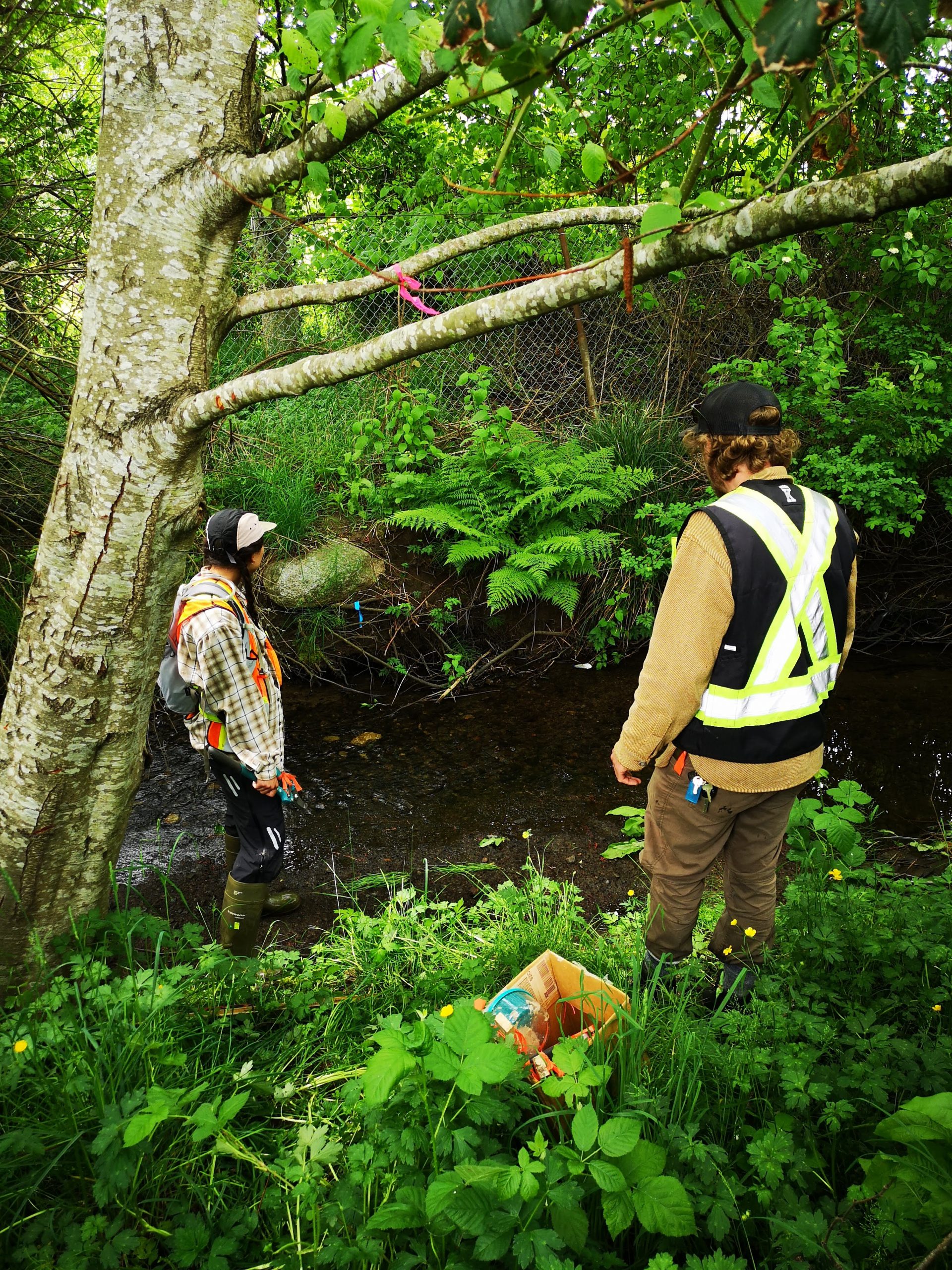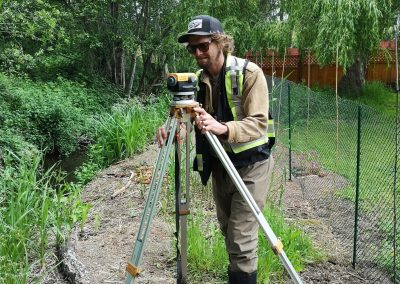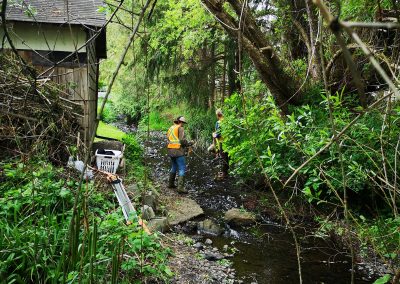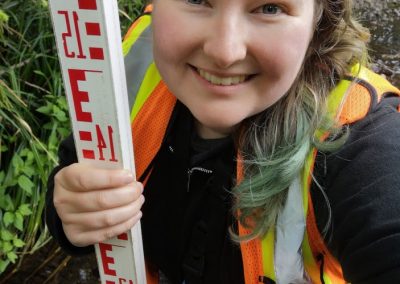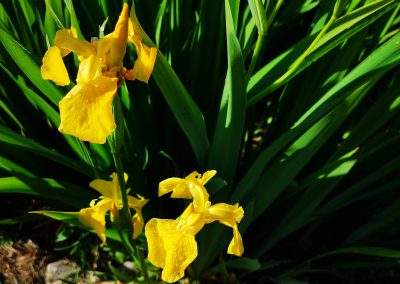Technician Report – Tuesday, September 28th
Sediment assessment ~ By Jamie Lund
The main data collected was depth, width, high water marks, sediment type, presence of invasive species, and areas for improvement. These qualities were measured every ten meters along the stream. The physical features of the stream (depth, width, high water marks, etc) were then graphed to give a stream profile diagram. This diagram will help us identify the types of restoration that would be beneficial and areas where it is most needed.
For instance, Glen Urquhart collects a large amount of water because the surrounding area has large impermeable surfaces, like concrete, as it is an urban stream. When the water load is high, it causes high flows and turbidity which wash away sediment and increase erosion. Essential gravel substrate for salmon spawning can be lost during these periods. Our profile diagram will help identify the areas where restoration projects designed to slow down flows and retain spawning sediment are most beneficial.
Yellow flag iris was found at Glen Urquhart during the stream survey. Yellow flag iris is an issue in wetland areas. It spreads quickly via rhizomes and outcompetes other plants. It also causes a barrier to fish movement if it establishes in the center of the stream. Removal of yellow flag iris is tricky, because if pieces of the plant are left behind it can reestablish itself. These pieces can also travel downstream, creating a larger distribution of the plant. At Glen Urquart it was found in small enough numbers that we could gently pull whole plants out of the stream.
If you find yellow flag iris in the community, you can report your sightings on iNaturalist. If it is located on your property, please consider careful removal to prevent further spread. More details can be found on the Invasive Species Council of BC (ISCBC) website.
With the help of the Healthy Watersheds Initiative funding Project Watershed has hired environmental technicians to assist with our projects over the summer and early fall. The Healthy Watersheds Initiative is delivered by the Real Estate Foundation of BC and Watersheds BC, with financial support from the Province of British Columbia as part of its $10-billion COVID-19 response. Jamie Lund, one of these technicians, will be posting a brief report every Tuesday to update the Project Watershed community on what they have been up to.
Related Posts
Mallard Creek Restoration Update for 2024
Restoration work in Mallard Creek will continue this year, including invasive removal, restoring connectivity, and trial planting of a new riparian species. Volunteer events starting in September 2024.
Volunteer at Kus-kus-sum Chamber of Commerce Event
We are showing Kus-kus-sum off to businesses in the Valley through a Chamber Business to Business event. We are looking for a few volunteers to assist with this event.
Coastal Plant Monitoring
Get involved with our new vegetation community science monitoring program!
Spring Field Trips
Throughout May and June Project Watershed will be taking elementary school classes out on field trips to learn about estuary and coastal ecology and to assist with planting and plant maintenance.
Working Together to Identify Forage Fish Spawning Beaches
This year marks the 5th year of a partnership between Comox Valley Project Watershed Society and North Island College on a long-term study to examine intertidal spawning habitats of forage fish in the northern Salish Sea.
Glen Urquhart Update – Spring 2024
Latest news from Glen Urquhart restoration progress for spring 2024.


